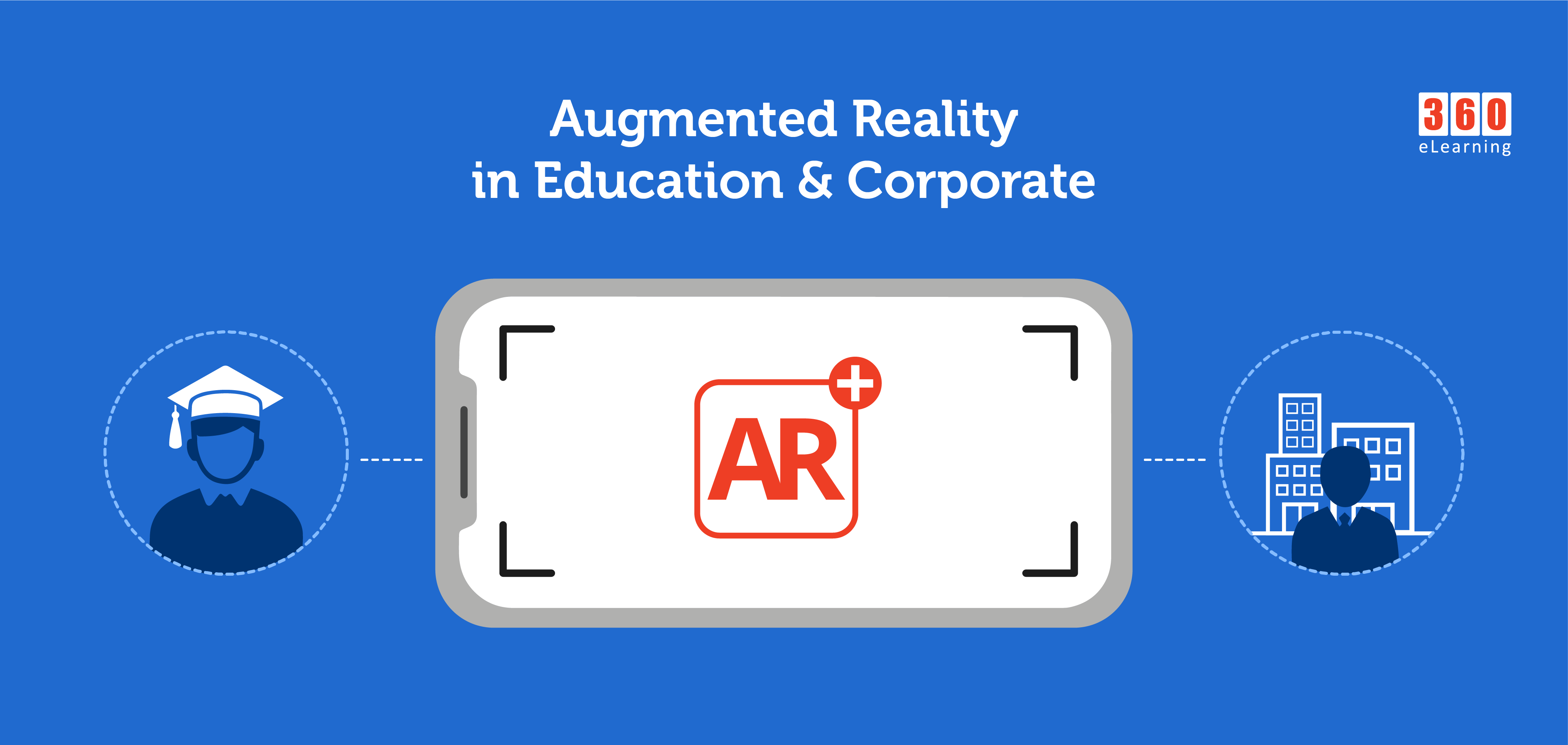Many schools are now transforming traditional classrooms into tech-oriented classrooms and making learning effective and engaging for students. On the other hand, organizations are heavily investing in human resource development. They train their employees through innovative ways by using technology. In this article, we will explore how schools and corporate are using AR for transferring knowledge and make the learner more participative and engaged.
So, here we go…
Augmented Reality technology allows the computer-generated object to be augmented in a real environment in real-time. AR can be marker-based or markerless. Marker-based applications require a reference point such as image, pattern or shape for recognition and place some information upon tracking that reference point. On the other hand, marker-less applications require a plane surface or GPS to place information in real-world. Markerless applications have wider applicability because they function anywhere without the need for any reference points. The scope of AR in education and corporate training is wider but it has some limitations concerning hardware, AR development, and its usage. Many AR applications have been developed in education and corporate settings that work best for learners.
AR in Education
AR has a wider scope to apply on some difficult subjects such as chemistry, physics, biology, mathematics, astronomy, and other K-12 or higher education subjects.
A lot of AR applications have been developed in different K-12 subjects’ topics. In mathematics, much work was done in geometry part in which most apps have been developed to provide shapes’ information such as ‘ShAPPes 3D shapes in AR by Juan Carlos Munera Vicente and shapes 3D by clever books’, in which students can learn geometry through visualization and interaction, view 2D and 3D shapes from all angles. For early age kids, many AR apps have been developed to improve their motor, phonics and cognitive skills. Magic Activity AR app provides several AR-enabled activities for kids in which kids can learn numbers, alphabets, and geometry shapes. AR Solar system is a great example of Astrology subject. In chemistry, Popar has made 3D AR Periodic Table to enhance science classrooms across the world. AR Anatomy apps provide spatial learning about the human skeleton and other body parts, in which, medical students can see human body parts in 3D with an immersive experience. Many organizations provide AR services to schools, in which they are transforming traditional books to Augmented Reality enabled books such as Magic Book.
AR can make the educational environment more productive, pleasurable, and interactive for students. AR has the power to engage the learner in a variety of ways with rich content that was not possible before.
AR in Corporate Training
The market size of the global workplace training industry is more than $300 billion in 2018. Companies are heavily investing in human resource development to get the edge over their competitors. Several different training takes place in corporate such as customer service, compliance, soft skills, onboarding, and sales training.
For new hire onboarding, imagine the first day of work instead of waiting for someone to come and guide you the process of onboarding. You just open your phone camera and scan symbols. Immediately, you can get information about the specific area. In manufacturing, each machine contains labels on each component and worker just wear the glasses and get instant information about a particular part of the machine and fix the problems. In real estate, clients can see the home building in 3D view and apply colours on walls as per their choice. In tourism, visitors can see information about the particular monument or place thorough AR technology such as AR feature in Google Translator, in which user just open translator camera and scan the labels or building and get information about the object. In retails, Ikea AR app is an excellent example for decorating a room with furniture as per your choice. In museums, hundreds of ancient and precious heritage are examined through AR technology, such as Dinosaurs skeleton.
AR technologies may be applied to training and are almost the same as AR in education but AR works best for industrial and manufacturing maintenance areas. However, AR can be applicable for occupational safety and health. There are no more important tasks than safety inspections.
Conclusion
AR has many possibilities to create a learning experience that provides an immersive experience for learners to engage them in the learning process but don’t get lost in possibilities; find the right balance of content with learner’s characteristics. We will explain the instructional design process and placement of objects in Augmented Reality development in our next article. Stay in touch.


